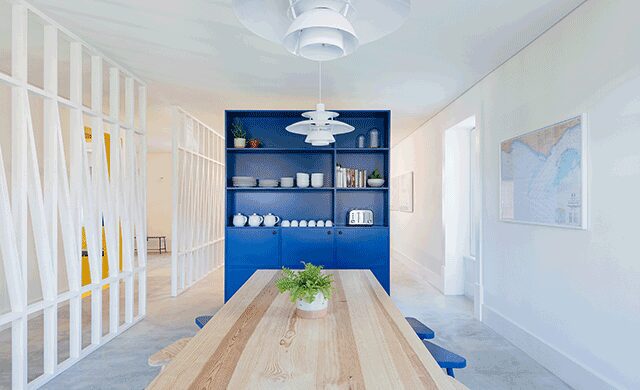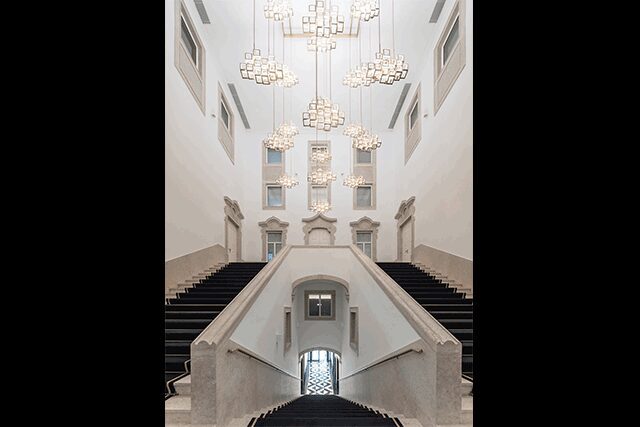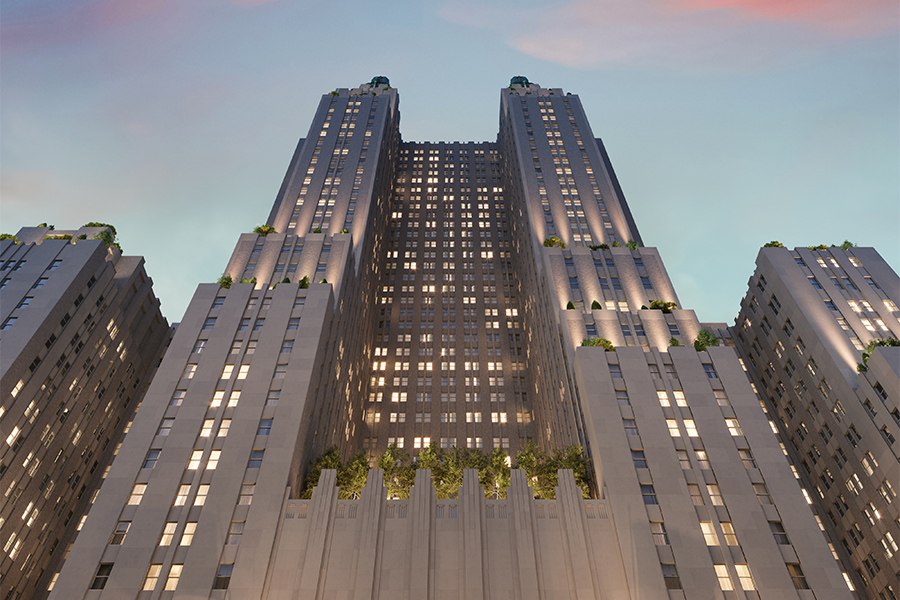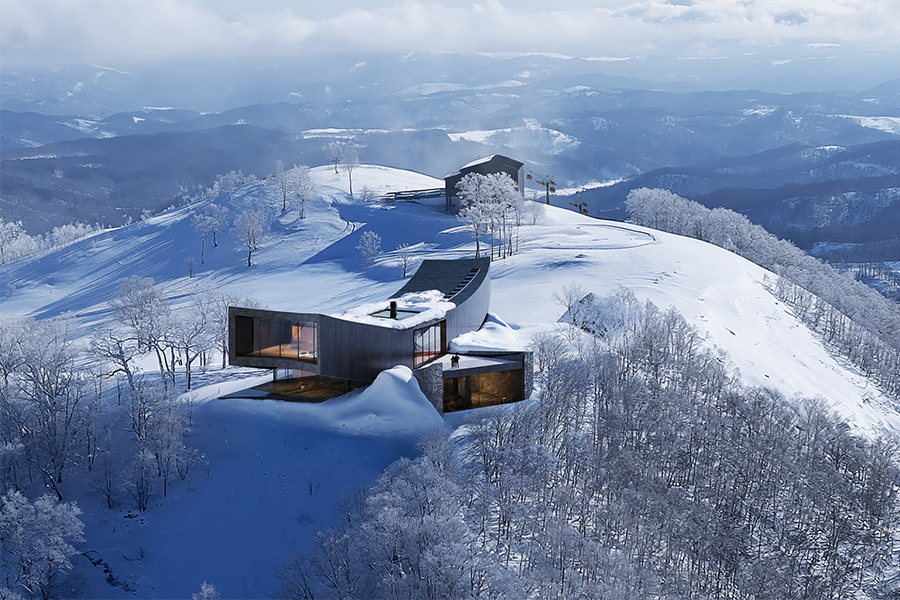
Hostel in Parede
With beautiful beaches, heritage cities, and a strong tendency toward sustainable design, Portugal has become the go-to destination for many travelers. Of those cities, Lisbon is teeming with excitement and development opportunities. In addition to 4.5 million annual tourists, 30 hotels with 2,800 rooms are expected to open in the coming year, according to Lodging Econometrics. Developers are attracted to the city’s Old World charm, and its rich tradition of authenticity is celebrated in historic hotel revamps and new offerings that are changing Portugal’s hospitality landscape, as well as the lush surroundings of its neighboring wine country and coastal towns.
Hostel in Parede > Just west of Lisbon in the bustling coastal town of Cascais, an old 1920s-era family home has been transformed into the bright and welcoming Hostel in Parede, thanks to local firms Aurora Arquitectos and Furo. “The house was in a very bad state and almost impossible to recover, but it still had certain valuable parts preserved, such as its incredible roof,” says architect Dora Jerbić. To restore the building, the firm divided the plan into nine modules, with a sweeping central staircase at its core. Dripping in bright yellow, it connects the building’s three floors and “invades the whole space with its sunlight and brightness,” she says. Flexibility was key: Autonomous volumes contain the bathrooms, which can easily be removed if guests want larger bedrooms. Despite whitewashed walls and polished concrete, glimpses of those sunshine hues and sea-green walls in the seven guestrooms imbue the space with whimsy. Communal areas, on the other hand, are dressed in cobalt blue shelving that echoes the outdoor patio space and the azure waters nearby.
Tivoli Évora Ecoresort > Immersed in the lush plains of the Alentejo region, about a 90-minute drive inland from Lisbon, near the historic World Heritage city of Évora, Tivoli’s latest is inspired by the surrounding age-old cork oak and olive trees. Guests can drink in the views of the breathtaking Alentejo Landscape from the rooftop infinity pool or relax in the 56 bungalow suites, also featuring wood and cork elements, which have been scattered throughout the grounds. The main building—home to reception, the restaurant, bar, spa, gym, and conference rooms—is built around a large courtyard that is “influenced by Arabic architecture in the Medieval villages of the Alentejo, where it was common to find a castle and several white buildings around it,” says project architect and designer José Carlos Cruz of his namesake firm. Built according to the highest standards of environmental practice and energy efficiency, “a cork coating ensures thermal insulation in an area where temperatures can vary greatly,” he says, adding that “the layout is designed to take advantage of crosswinds and air circulation” to minimize power consumption.
The Lumiares Hotel & Spa > For the transformation of a former 18th-century palace in the narrow cobblestoned streets of Lisbon’s Bairro Alto neighborhood into a 53-room apartment hotel, local firm Metro Urbe wanted the local bohemian character to permeate the interiors. “Surveyed from above, the quarter forms a striking grid of patterns, a warren of mismatched façades and painted walls adorned with Lisbon’s hero colors—sky blue, rosy pink, and warm ochre,” says firm cofounder João Pedro Pedras. Those contrasts and topography were captured in every detail of the hotel, which is spread across four floors of the old palácio. “Geometric prints in the materials, fabrics, artwork, and flooring accent the colors and golden light we see all around us,” cofounder Helder Cordeiro explains. The lobby’s bold black and white and brass-accented flooring complements the colorful abstract original artwork of celebrated Portuguese street artist Maser. Meanwhile, Algarve-based designer Beau McClellan’s captivating sculptural and cubic brass lighting installation adds a sophisticated point of reference. Almost everything in the hotel is locally made, flaunting a modern interpretation of Portuguese patterns and traditions.





